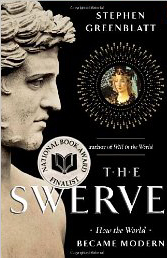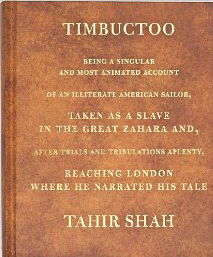Timbuctoo and Tahir Shah
Tahir Shah, and his lovely family, just visited us in Park City. Tahir is not a mathematician, or a scientist, but an author of books, “…many of which chronicle a wide range of outlandish journeys through Africa, Asia and the Americas. For him, there’s nothing so important as deciphering the hidden underbelly of the lands through which he travels.”
As authors and people we share many ideas in common but the one I like the most, in Tahir’s words,”We can all be explorers, and can all find wonderment wherever we are.” For Tahir the idea applies to people: to where they are and what they see, to how they live and to how they feel. For me I apply the idea to math and science, saying that these are not just “subjects,” to study, and the means to calculate, but rather ways of thinking, of exploring new ideas, and ways of discovering new things.
Tahir’s new book is Timbuctoo – and, within the spirit of my website, there’s a hidden logic to the story where somethings, (treasures), are hidden, I mean really hidden, and you can literally find them by following clues in the book. Don’t think I can say more than that as he doesn’t seem to have announced that there is a true mystery to unravel. Visit Tahir’s website at http://www.tahirshah.com/.
Timbuctoo is in West Africa and South of Morocco. For many years Timbuctoo was considered to be a, “Forbidden City,” and speculations about the town ran rampant in Europe with tales of the town being exceedingly rich and mysterious. In its Golden Age Timbuctoo was a successful trading center, trading all sorts of things, including, most importantly, books. Even today, there are libraries of ancient texts, many rotting and uncared for, as the town, after centuries of decline, is slowly engulfed by desert sands. Of course it would be interesting to find out what manuscripts lie forgotten in Timbuctoo, particularly as it is well known that Islam valued ancient texts, including texts on science and mathematics, and copied and traded ancient works of the Greeks, Islamic scholars, and even those of earlier civilizations. This is important as such works were left to rot, or actively destroyed, in the countries of the West – from the beginning of the Christian era to about the thirteenth century. Ref. see the Pulitzer Prize winning, “The Swerve,” by Stephen Greenblatt, also, “How the Irish Saved Civilization,” by Thomas Cahill.
Oh yes, I forgot to say that Tahir’s book is beautifully assembled, about two inches thick, and bound in the tradition of books as they used to be; with a leather binding, end papers, high quality paper, and fold-out maps and charts. It’s also a really good read!


 One of the Timbuctoo libraries, but books and scrolls were hidden all over the place, in walls, in the nearby desert…
One of the Timbuctoo libraries, but books and scrolls were hidden all over the place, in walls, in the nearby desert…

